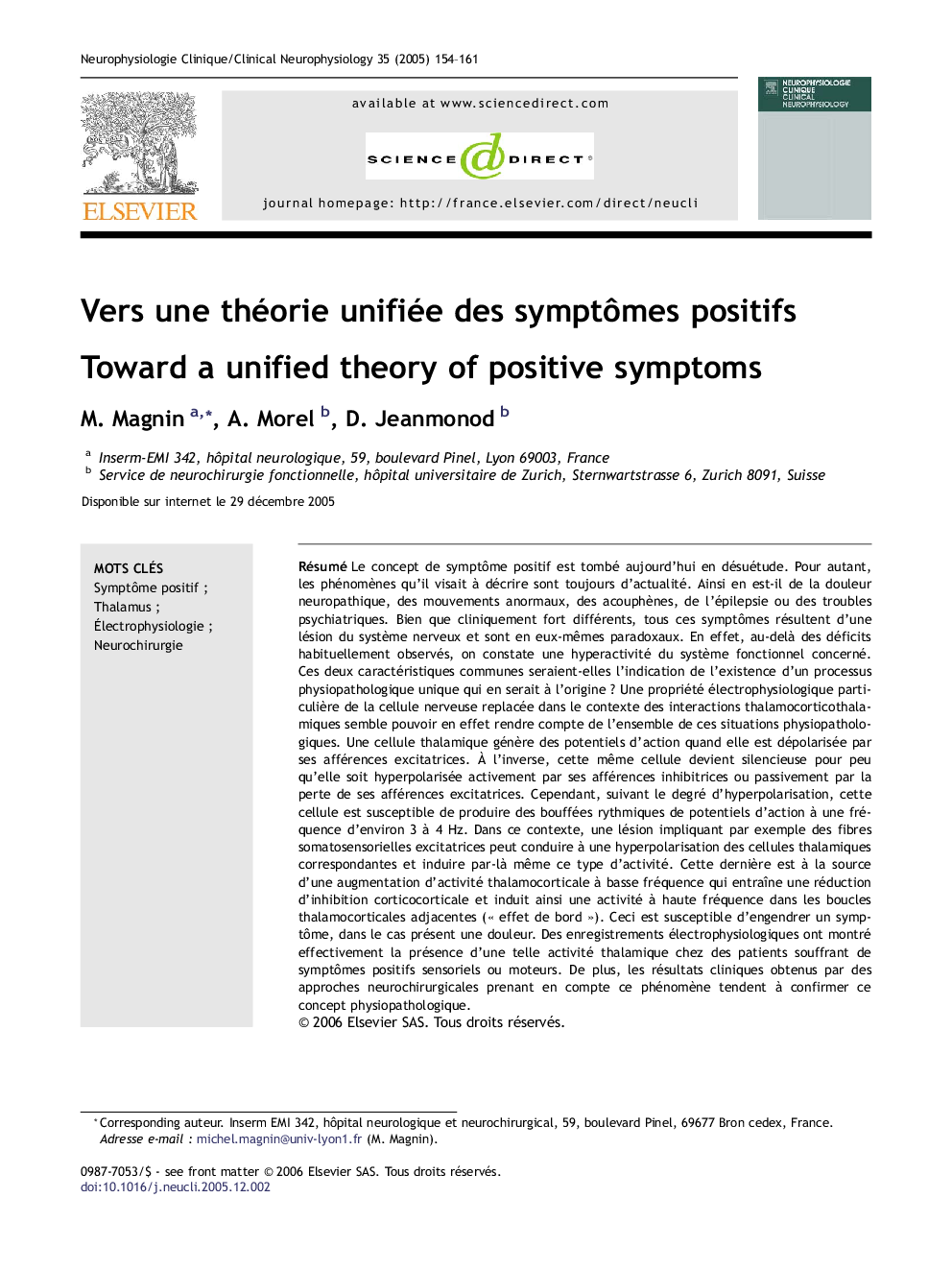| Article ID | Journal | Published Year | Pages | File Type |
|---|---|---|---|---|
| 9201318 | Neurophysiologie Clinique/Clinical Neurophysiology | 2005 | 8 Pages |
Abstract
Defined more than one century ago, the concept of positive symptoms has become obsolete, except in the psychiatric domain. However, its relevance remains intact today when considering such pathophysiologies as neuropathic (phantom) pain, movement disorders, tinnitus, epilepsy, and psychiatric disorders. Beside their very different clinical characteristics, all these symptoms arise from a lesion in the nervous system. Furthermore, they are paradoxical in the sense that they correspond to a spontaneous hyperactivity of the injured functional system, concomitant to the usual deficits resulting from the lesion. Could these similarities reflect the existence of some common pathophysiological process? A peculiar electrophysiological property of thalamic cells is likely to be compatible with this hypothesis. A thalamic cell produces action potentials when depolarised by excitatory inputs. Conversely, its ability to produce action potentials is decreased or even completely suppressed when the same cell is hyperpolarized by inhibitory influences. However, depending on its level of hyperpolarization, this cell can also produce rhythmic paradoxical bursts of activity at low frequency (3-4 Hz). In this context, a lesion involving, for example, the somatosensory excitatory fibres gives rise to hyperpolarization of the corresponding thalamic cells, which may produce such rhythmic bursting activity. This causes an increase of low frequency thalamo-cortical activity, which, through reduction of collateral cortico-cortical inhibition, induces high frequency activity in neighbouring thalamo-cortical loops (“edge effect”). This leads to the appearance of the clinical symptoms, in this case, pain. Electrophysiological recordings performed in patients suffering from sensory or motor positive symptoms have shown the presence of such deleterious sequence of events. Furthermore, the efficiency of neurosurgical treatments that are used against some positive symptoms can be explained on the basis of such a dynamic process. Both considerations support the validity of the proposed hypothesis and open avenues for the control of other positive symptoms.
Related Topics
Life Sciences
Neuroscience
Neurology
Authors
M. Magnin, A. Morel, D. Jeanmonod,
